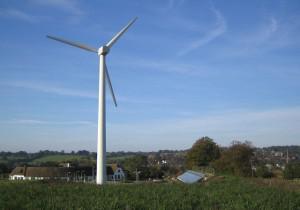 In May 2011, shortly after the Fukishima Daiichi nuclear disaster, Germany’s government decided to put the country on track to phase out its nuclear power plants by 2022. In its place will be energy from renewable sources such as wind, solar, geothermal, and bioenergy, as mandated by Germany’s 2012 Renewable Energy Act. As one of – if not the most – ambitious and expensive green energy models to be implemented, other countries and environmentalists will be watching closely to see if renewable energy can actually work on such a large scale.
In May 2011, shortly after the Fukishima Daiichi nuclear disaster, Germany’s government decided to put the country on track to phase out its nuclear power plants by 2022. In its place will be energy from renewable sources such as wind, solar, geothermal, and bioenergy, as mandated by Germany’s 2012 Renewable Energy Act. As one of – if not the most – ambitious and expensive green energy models to be implemented, other countries and environmentalists will be watching closely to see if renewable energy can actually work on such a large scale.
The legislation, which went into effect at the beginning of this year, outlines how Germany will ramp up production of renewable energy. The goals stated in the policy are: at least 35 percent of energy will come from renewable sources by 2020, at least 50 percent by 2030, at least 65 percent by 2040, and between 80 and 95 percent by 2050. A recent press release by Germany’s Federal Ministry for the Environment, Nature Conservation and Nuclear Safety shows that renewable energy accounted for roughly 20 percent of energy production last year, up from just 6.4 percent in 2000.
According to the Associated Press, Germany’s vast expansion in renewable energy will depend on investment incentives, government subsidies, and the continued cooperation of taxpayers. Technology-specific remunerations, or feed-in tariffs, are given to renewable power plants for 20 years, and reward those that start up sooner. While expediting investment, feed-in tariffs will help give market access to smaller companies. To help foot the bill, Germans pay for electricity by the “user-pays” principle, meaning the price of power increases with consumption. German citizens also pay a 3.5 euro cent per kilowatt-hour tax, or roughly $205 per year for a family of four, to help subsidize costs associated with the legislation (see link above for more information).
Since first being adopted by German Parliament in 2001, the Renewable Energy Act has been fairly successful. Besides boosting the share of Germany’s renewable power sources to over 20 percent, each legislative benchmark has been surpassed along the way. Producing electricity from renewable sources also eliminates the hidden costs (for example, to public health) associated with burning fossil fuels. However, the plan has not escaped criticism. One study, carried out on behalf of the Bavarian Business Association, estimates the cost of the legislation (€250 billion) plus indirect costs (€85 billion) to total €335 billion, or $469 billion, over the next nine years—not to mention up to 2050. As Jeremy Rifkin, an American economist put it, “Germany can’t afford to fail.”
Image taken in England

